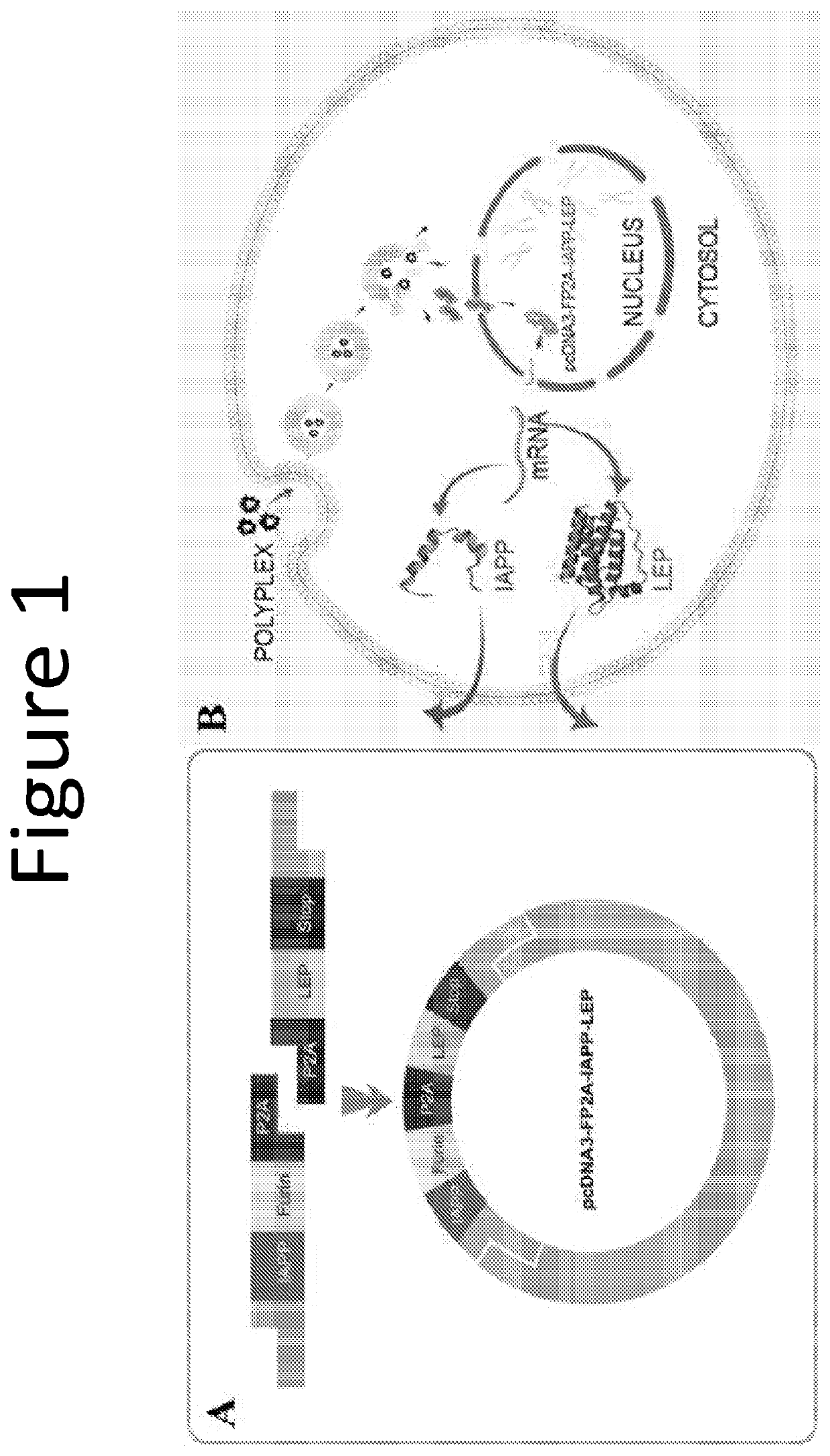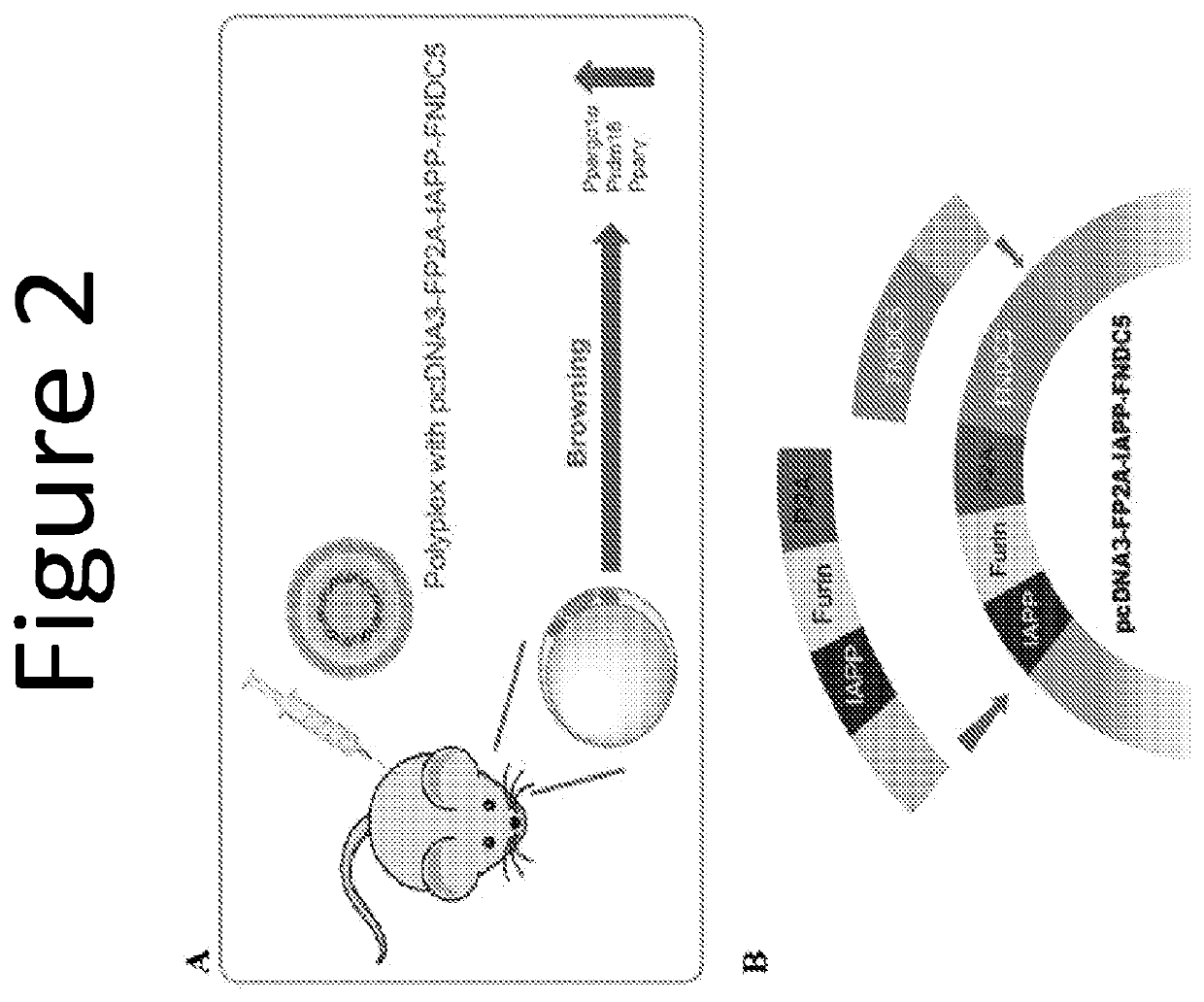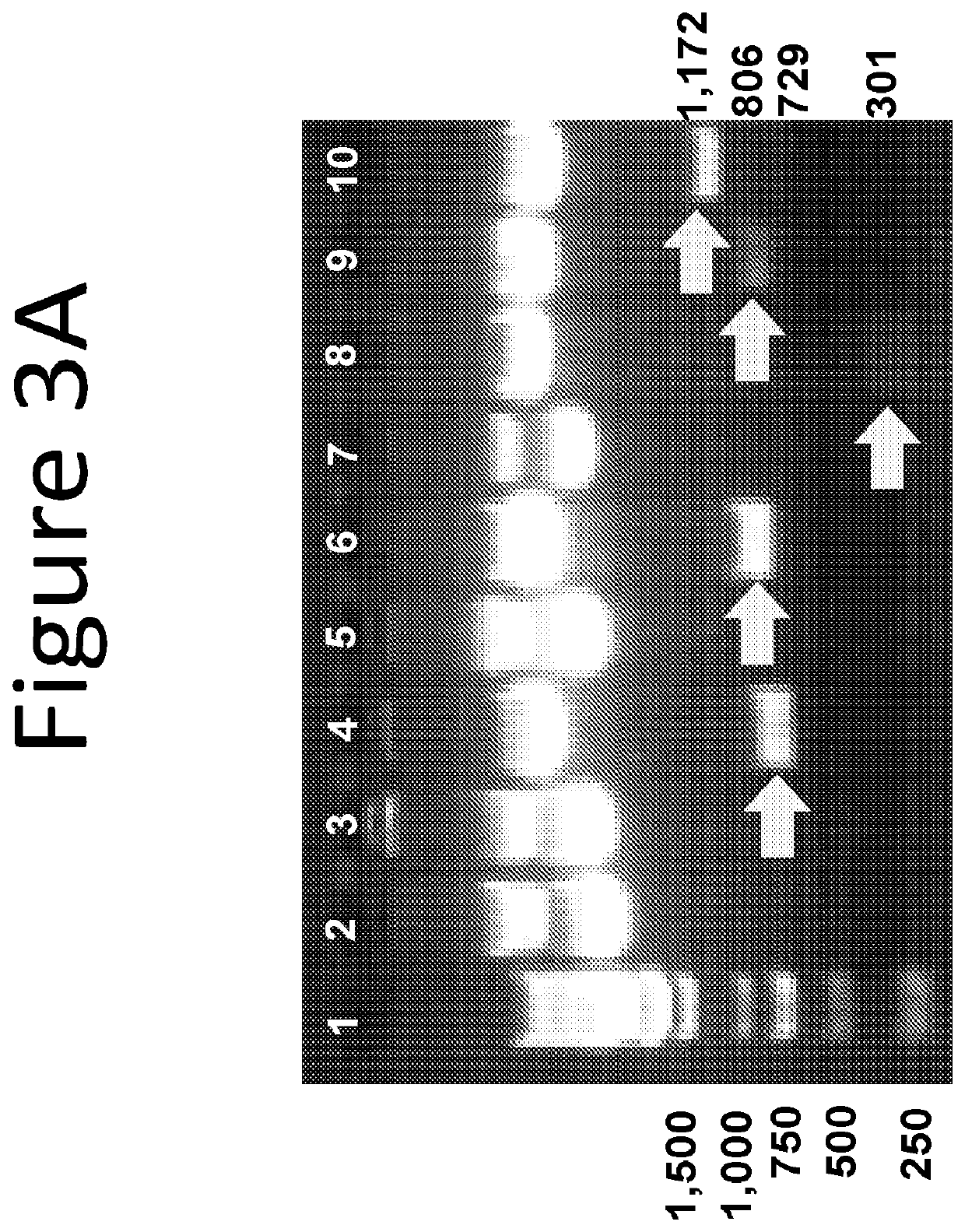Combinatorial gene construct and non-viral delivery for anti-obesity
a gene construct and anti-obesity technology, applied in the field of anti-obesity combination gene constructs and non-viral delivery, can solve the problems of limited patient compliance, irritation at administration sites, limited efficacy, etc., and achieve the effect of increasing metabolic activity in a mammal
- Summary
- Abstract
- Description
- Claims
- Application Information
AI Technical Summary
Benefits of technology
Problems solved by technology
Method used
Image
Examples
example 1
[0088]This example describes the construction of a plasmid comprising a nucleic acid sequence encoding islet amyloid polypeptide (IAPP) and either a nucleic acid sequence encoding leptin (LEP) or a nucleic acid sequence encoding fibronectin type III domain containing 5 (FNDC5).
[0089]Three plasmids referred to as pcDNA3-IAPP, pcDNA3-LEP, and pcDNA3-FP2A-IAPP-LEP were constructed with mouse-originated IAPP and LEP genes. For the bicistronic plasmid pcDNA3-FP2A-IAPP-LEP, the IAPP and LEP genes and nucleic acid sequences encoding furin and P2A (FP2A) were assembled by IN-FUSION™ reaction (Huh, h. et al., Biologicals, 35: 165-171). A schematic of the bicistronic pcDNA3-FP2A-IAPP-LEP plasmid is depicted in FIG. 1. Forward and reverse PCR primers were designed which included a more than 15 base pair overlap with the neighboring segment of pcDNA3 plasmid (Invitrogen, Carlsbad, Calif., USA) and more than 20 base pairs of target gene-specific sequence. The primer sequences for pcDNA3-FP2A-IAP...
example 2
[0098]This example describes expression of the genes IAPP, LEP, and FNDC5 from plasmids generated in accordance with the invention.
[0099]The presence and size of the insert of each of the plasmids described above was confirmed by restriction enzyme digestion and agarose gel electrophoresis, as shown in FIGS. 3 and 4.
[0100]Expression of the IAPP, LEP, and FNDC5 genes from each of the plasmids described in Example 1 was evaluated in HEK293T cells. Specifically, each plasmid was transduced by XFECT™ Transfection Reagent (Clontech, Mountain View, Calif.) into HEK293T cells (ATCC, Manassas, Va., USA) according to the manufacturer's protocol. HEK293T cells were cultured in DMEM (ATCC, Manassas, Va., USA), supplemented with 10% fetal bovine serum in 5% CO2 humidified atmosphere at 37° C. Briefly, HEK293T cells were cultured in a six-well plate at an initial density of 5×105 per well for one day. 5 μg of pDNA complexed with 1.5 μl of XFECT™ was then added to the cells, followed by an additi...
example 3
[0111]This example describes in vivo gene delivery of the pcDNA-FP2A-IAPP-LEP plasmid and resulting changes in body weight and food consumption.
[0112]To determine the most suitable frequency and dose of lPEI-pDNA polyplexes, the polyplexes were first administered intraperitoneally (i.p.) to lean mice. The lPEI-pDNA polyplex containing the IAPP gene (lPEI complexed with pcDNA3-IAPP or with pcDNA3-FP2A-IAPP-LEP) and the polyplex containing the LEP gene (lPEI complexed with pcDNA3-LEP or with pcDNA3-FP2A-IAPP-LEP) displayed much higher concentrations in serum of treated mice as compared to untreated mice on day 1 and day 3 post-administrations. However, after one week, protein levels prominently declined. Moreover, weight loss was observed in treated mice, and reached a plateau or began to slightly reverse after one week. Thus, weekly polyplex administrations were chosen for further studies using diet induced obese (DIO) mice. Circulating hormone concentration and weight loss were not ...
PUM
| Property | Measurement | Unit |
|---|---|---|
| Tm | aaaaa | aaaaa |
| temperature | aaaaa | aaaaa |
| temperature | aaaaa | aaaaa |
Abstract
Description
Claims
Application Information
 Login to View More
Login to View More - R&D
- Intellectual Property
- Life Sciences
- Materials
- Tech Scout
- Unparalleled Data Quality
- Higher Quality Content
- 60% Fewer Hallucinations
Browse by: Latest US Patents, China's latest patents, Technical Efficacy Thesaurus, Application Domain, Technology Topic, Popular Technical Reports.
© 2025 PatSnap. All rights reserved.Legal|Privacy policy|Modern Slavery Act Transparency Statement|Sitemap|About US| Contact US: help@patsnap.com



